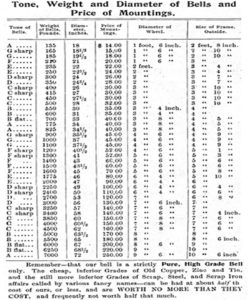History of the German Evangelical Protestant Church / St. Luke’s United Church of Christ Church Bell
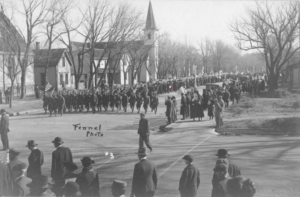
(Photo of the Bell in the original church building on Armistice day 1918 (Note:The negative was inverted)
In 1905 a “Bell Fund” was initiated. Church records indicate that the Frauen-Verein or what would today be considered the Women’s Fellowship, raised t funds needed for the Bell. A notation in the church history, from the year 1905, states “An ice cream social was held at the home of Mrs. David Schupbach and the money raised was applied to the “bell fund” which had been started early that year.”
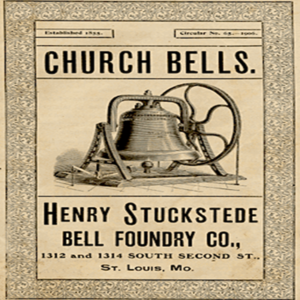
The “bell fund” amounted to $81.20 in 1906 and the bell was purchased for $118.80 from The Henry Stuckstede Bell Foundry Co. in St. Louis, Missouri and finally hung in the steeple of the Original Church in 1909. The reason for the delay is unknown but it is likely that the molding process and shipping were the cause for the delay. It was once again moved to the New Church building in 1952.
(The photo to the right is of the cover of the Stuckstede sales catalog that the church bell would have been ordered out of in 1906)
About the Bell
In the Fall of 2018 a Campanologist (someone who studies bells) was consulted and based upon the factory records and the photos we sent was able to share this information with us.
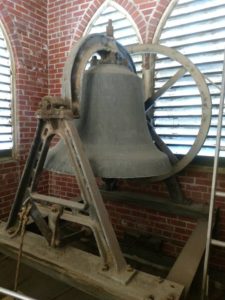
The church bell weighs approximately 1300 pounds; the yoke, supports and clapper would almost double that, for a total weight of more than a ton. It would have been shipped from the foundry fully assembled on the timber base, but probably was partially disassembled for hoisting into the tower.
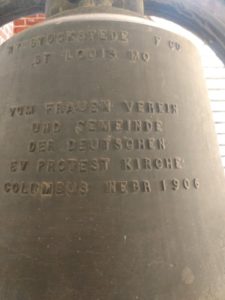
Inscriptions and More The photo of the inscriptions show clearly that the foundry was still using the “false bell” method of molding, rather than the “two cases” method that most other foundries had adopted by then. The clue is the missing “B” – the first line of the maker’s inscription should end in “B F CO” (for Bell Foundry Company). The custom inscription (in German) can be translated as “From the Women’s Association and Congregation of the German Evangelical Protestant Church / Columbus Nebraska 1906″. And because the congregation wanted the year as part of the custom inscription, Henry Stuckstede’s workers omitted it from the maker’s inscription, where normally it would have appeared on the third line.
It’s unusual for both the association and the congregation to be listed as donors — usually it would be one or the other. The photos show that all of the fittings are original, and in excellent condition. That can be attributed in part to the dry and windy climate of the Columbus area. As commonly happens, the bearings have been over-oiled more than once, but that’s harmless — just messy. The ropes are drawn toward a pulley on the side of the belfry rather than falling straight down from the rim of the wheel. Running the ropes down the rope down a rope shaft through to the base of the tower makes it possible for the rope to be out of the way in the church entry.
Based upon the size of the bell, and information from the “The Henry Stuckstede Bell Foundry Co” from that time period sales literature, indicates that the sounding note was intended to be F sharp. However, standardizing of pitch in the United States of American did not occur until 1926 with World Wide pitch standardization occurring in 1955 and 1975.
